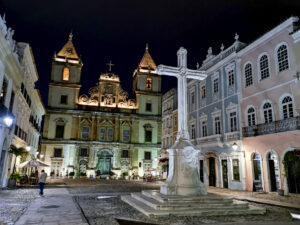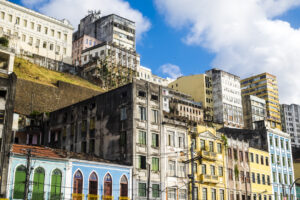
Tourism Insight
Historic city centres: preserving urban memory & authenticity
May 2025
Not every city is a tourist destination, but those that safeguard their environmental heritage and promote community well-being have the potential to turn their history and culture into meaningful experiences for both residents and visitors.
Historic city centres are a living expression of this process, embodying the identity and evolution of a place over time.
The role of historic centres in urban identity
Historic centres often mark the original core of urban development. Their location is typically linked to natural advantages such as access to fresh water, fertile land, and defensive topography. Over time, these areas evolved into hubs of economic and cultural activity, accumulating a rich architectural and intangible heritage.
They house historic buildings, cultural expressions, key public institutions, and diverse economic activity. Many are protected as national or local heritage sites, with several listed as UNESCO World Heritage Sites for their outstanding historical and cultural value.

The challenge of urban expansion
Cities are living organisms, constantly growing and evolving. However, this transformation is not always balanced. When political and economic functions shift to other areas, historic centres often suffer depopulation, declining public safety, urban decay, and real estate devaluation.
Public policy plays a vital role in reversing this trend. Incentives for reoccupying historic buildings — both by public and private actors — are key. Initiatives such as architectural retrofitting, support for the creative and digital economy, and affordable housing programmes can bring new residents, stimulate activity, and strengthen local commerce and services.

Historic centres as tourism assets
The world’s leading tourist cities often have their historic centres at the core of their appeal — hosting museums, cultural institutions, and venues for diverse events. However, excessive popularity can lead to overcrowding and the erosion of authenticity, ultimately compromising the experience for visitors and the quality of life for locals.
Balancing tourism with liveability demands cooperation between public authorities, private sector stakeholders, civil society, and local communities. Urban growth regulation, intelligent tourism management, and technology for monitoring and maintenance can support a sustainable coexistence between residents and tourists.

Towards sustainable urban heritage
Preserving historic centres requires a strategic and integrated approach, including:
- Investment in green and public infrastructure, with a focus on pedestrian areas, public squares and open-air spaces, while addressing climate change resilience
- Promotion of public transport and sustainable mobility solutions
- Implementation of technologies for safety monitoring and urban maintenance
- Support for the digital transformation of tourism and professional training
- Responsible management of visitor capacity and urban density to foster a harmonious relationship between residents and tourists
Revitalising historic city centres restores local pride, strengthens cultural identity, and creates a unique atmosphere that appeals to visitors seeking authenticity. Blending heritage and sustainable development is the path to transforming these areas into vibrant, future-ready destinations.

